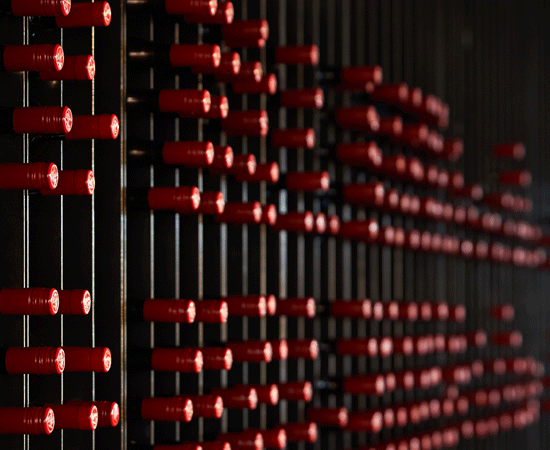Are there particular qualities to California reds that you seek to coax out?
It isn’t about imposing. It’s about listening to the fruit, understanding the site, and guiding it with restraint and respect. California reds, especially from regions like Napa and Paso Robles, offer a richness and generosity that’s quite different from South Australia. The fruit tends to be bold and plush, with natural ripeness and structure. What I seek to coax out isn’t just power, but balance. I look for purity of fruit and also finesse. California can give you big structure, but I aim for polish and integration, not just grip. Even in California, I strive to maintain the hallmarks of our House Style – layered, expressive, age-worthy. That mindset has allowed us to create wines that are distinctly Penfolds, yet unmistakably Napa.
How did it feel to work on groundbreaking wines such as Quantum and Bin 149?
The idea of multi-hemisphere blends had been quietly forming for years. With the groundwork laid in the late '90s – planting Magill and Kalimna clones in Paso Robles. Quantum and Bin 149 weren’t just new wines, they were a statement. They represented a bold step into uncharted territory: blending fruit from California and South Australia, two hemispheres, two expressions of Cabernet, united by the Penfolds House Style. Working on these wines was exhilarating. Equal parts pride and responsibility. It challenged everything we knew about regionality, logistics, and stylistic cohesion. But it also reaffirmed what we’ve always believed – that Penfolds is not bound by geography, it’s defined by philosophy. They are unmistakably Penfolds, just with a broader accent.
Do wines need a ‘sense of place’ to be exemplary?
I believe place matters deeply. It shapes the fruit, the rhythm of the vineyard, the challenges and the character. But what we’ve learned is that excellence isn’t exclusive to place. It can be shaped by philosophy, by intention, and by the hands that guide it. Penfolds has always been about blending – across vineyards, regions, and now hemispheres. That doesn’t dilute identity; it expands it. The ‘sense of place’ becomes layered, not lost. When done with respect and precision, blending can elevate, not erase, the story of place.
In your eyes, what turns a good Shiraz into a truly great one?
A good Shiraz can be bold, generous, and expressive. But a truly great Shiraz, like Grange, transcends the glass. It’s not just about flavour; it’s about structure, longevity, and emotional resonance. A great Shiraz reveals itself slowly. It promises something extraordinary in 10, 20, even 50 years. Great Shiraz is shaped with vision. Every decision from vineyard to barrel is deliberate, thoughtful, and uncompromising. Grange, in particular, is a masterclass in blending, oak integration, and patience. And being part of shaping wines that aspire to that level is both humbling and inspiring.
Have you noted an evolution in the style of Grange and Bin 707 and do any vintages stand out in your memory?
Wines like Grange and Bin 707 aren’t static. They’re living expressions of each vintage, shaped by climate, vineyard decisions, and subtle shifts in philosophy. Over the years, I’ve seen Grange become more refined in its power. The core remains, but there’s a growing elegance in how the fruit and oak integrate. Earlier vintages of Bin 707 leaned heavily into structure; recent ones show more finesse, without compromising age-worthiness. Some vintages I particularly favour would be 1998 Grange. It’s a wine that still speaks with authority. 2010 Grange is a modern classic, beautifully composed. 2004 Bin 707 showed how Cabernet could be both muscular and graceful, and 2016 is a standout for its polish and clarity of fruit.
Many collectors have had the chance to meet ‘Baldy’ at our re-corking clinics. Looking back, have any particular stories stayed with you?
The Re-corking Clinics are certainly amongst the most memorable moments for me. They’re not just about assessing and preserving wine, they’re about connecting with collectors, hearing their stories, and witnessing the emotional bond people have with their wine. One moment that stands out was meeting a collector who brought in a bottle of Grange from the 1960s, gifted to him by his father. He’d kept it for decades, waiting for the right moment to share it. Seeing the reverence in his eyes as we assessed the wine reminded me that what we do isn’t just technical, it’s deeply personal. Moments like these remind me we’re not just custodians of wine, we’re custodians of memory. Being known as “Baldy” has added a layer of warmth and familiarity. It’s not just about the wine. It’s about the people, the stories, and the shared passion that makes Penfolds what it is.
Date interviewed: August 2025




